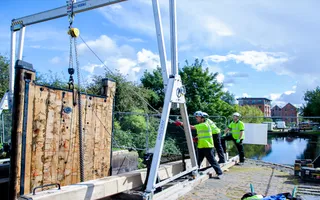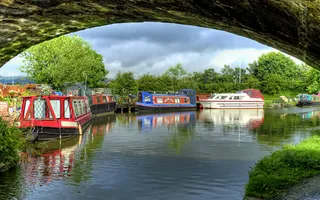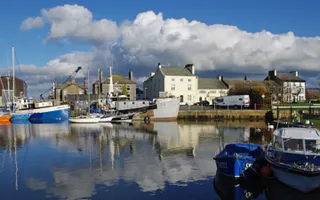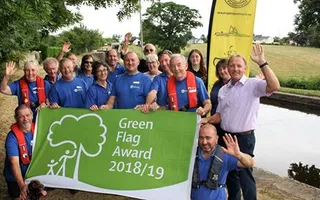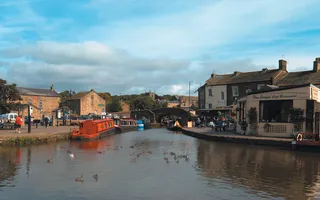The Lancaster Canal was only recently connected to the national waterway network via the Ribble Link in 2002. Spending the majority of its life in isolation, it has developed its own unique character.
Places to visit
Enjoy a family day out with fresh air, wildlife, wonderful walks, heritage and boats, all absolutely free.
As well as spectacular views of the Silverdale Coast, Forest of Bowland and Wyre countryside, the Lancaster Canal also features some of the most impressive canal architecture in the country. The Lune Aqueduct, which has recently benefited from a £2.4 million transformation, is one of John Rennie's finest works and not to be missed.
The history
Promoted by wealthy local merchants in the late 18th century, the Lancaster Canal was originally envisaged as a line from the Bridgewater Canal at Worsley through to Kendal. The plans were torn up and redrawn several times, and the final incarnation as seen today bears little resemblance to the original proposals.
Cargo - the Black and White Canal
The canal's principal purpose was to transport coal north from the Lancashire Coalfields, and limestone south from Cumbria. The nature of these cargoes gave the waterway its local nickname - the Black and White Canal. The Glasson branch (1820) allowed cargo transfer from sea going vessels that could not navigate the increasingly shallow Lune Estuary into Lancaster.
The canal was built in two sections, north and south of the River Ribble. John Rennie designed major two aqueducts, one over the Lune at Lancaster, and one over the Ribble at Preston. Due to problems with the foundations of the Lune Aqueduct, the company ran out of sufficient money to build the Ribble aqueduct to connect the two sections. Instead, a tramway was built from Walton Summit to Preston. This worked adequately, and so the two sections were never connected.
Subsequently, in 1816 a branch was opened from the southern section to the Leeds & Liverpool Canal at Johnsons Hillock. The section south of Preston became part of the much-delayed Leeds & Liverpool, who leased it in 1863: and the tramway from Walton Summit to Preston eventually closed in the 1880s.
North of Preston, though, the waterway was fairly successful. Because of the lack of locks, the daily Packet Boat passenger service really was 'express' - Kendal could be reached from Preston in an unheard of 10 hours. In fact the service was so comfortable that passengers on the daily runs between Preston and Kendal remained loyal to the waterway for several years after the arrival of the trains.
Roads posed a more serious threat and after a general decline (the last cargo sailing in 1947) the construction of the M6 motorway through the line of the canal finally saw the 14 miles of the Northern Reaches isolated at Tewitfield Locks. The isolated, largely unnavigable section to the north is home to the only tunnel on the Lancaster Canal at Hincaster.
Boating to and from the Lancaster Canal
However, the modern age has benefited the Lancaster Canal in one way: the new Millennium Ribble Link. Opened in 2002 as the first new canal for 97 years, this connects the Lancaster to the national network via the River Ribble, the River Douglas and the Leeds & Liverpool Canal's Rufford Branch.
Please note, that you need to book your passage along the Ribble Link through our online booking system.
Where does the water come from?
Much of the water in the Lancaster Canal comes from Killington Reservoir, feeding along Peasey Beck for 8 miles, before entering the canal. The Lancaster Canal north of Tewitfield Locks is not navigable, but transfers water to the navigable section. Many feeders supply the canal, between them contributing about the same amount of water as the reservoir.
The Glasson Branch receives water from the canal main line, supplemented by the River Condor feeder below lock 4.
Locks 1-3 on the Ribble Link get their water from the Lancaster Canal, below lock 3 the water comes from Savick Brook.
Work began constucting the canal before the southern link into the main canal had been finalised. The canal was not joined to the rest of the netowork until the completion of the Ribble Link in 2002.





